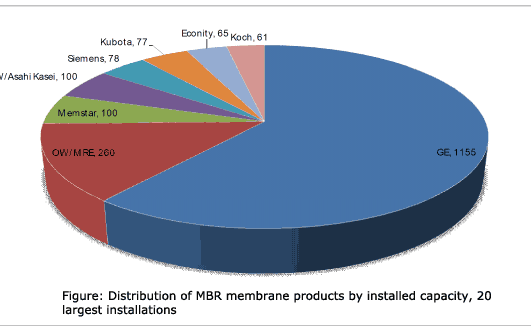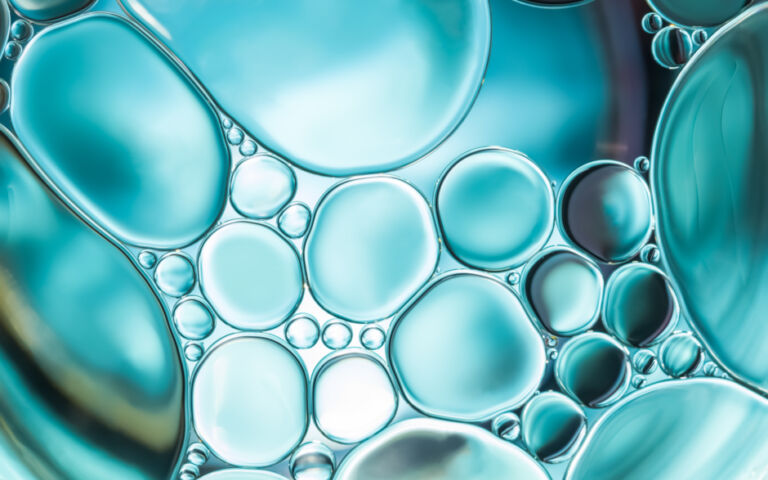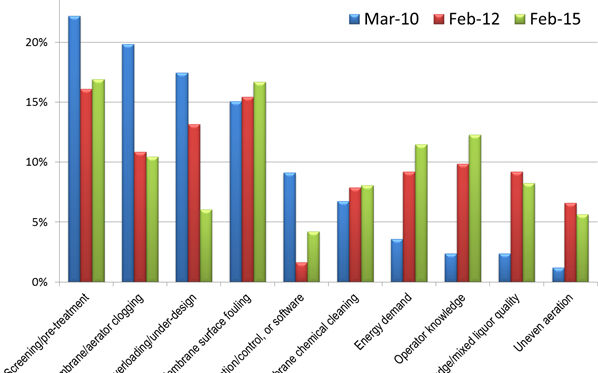The MBR Site report: Euromembrane 2018
Euromembrane 2018, the conference of the European Membrane Society, was hosted by the Universitat Polytècnica de València in Spain’s truly beautiful third city from 9−13 July.
This eclectic and comprehensive conference, at El Palacio de Congresos de València, hosted over 250 presentations encompassing the complete range of membrane processes including gas separation.
The four-day programme, organised by José Antonio Mendoza-Roca and his team, comprised a full day of presentations on MBRs and membrane reactors, and five sessions on membranes for wastewater treatment.
The programme of five parallel sessions of presentations was supported by approximately 500 posters. For the purposes of this report, we feed back on the MBR aspects of the conference.
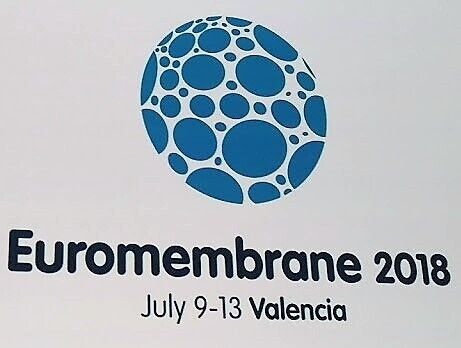
Plenary lectures
Of the four plenary lectures, the first was delivered by Richard Baker − a man of extensive experience in membrane technology development and implementation, encompassing both liquid and gas separation. Although Richard’s lecture, 'Barriers to the development of new membrane. Gas separation applications' focused on gas separation, his themes had a familiar ring: the divide between academia and industry, the lack of implementation of novel ideas, and how the importance of the design process is often underestimated: ‘When you have a good membrane material, you are at the beginning, not at the end’.

Richard pointed out that implementing a full-scale membrane process is a completely different proposition to producing a super-permeating, highly selective membrane developed under ideal operating conditions on the laboratory bench. He also gave a very informative summary of specific applications for membrane gas separation technology and, just as importantly, applications where there is little or no prospect of membrane technology displacing conventional ones.
Simon Judd delivered the second plenary lecture − discussing the quantification of MBR membrane channel clogging ('The measurement of ragging and clogging in MBRs'). The group at Qatar University has spent a year studying both sludging − the filling of membrane channels with agglomerated floc solids − and ragging − the formation of problematic long rags from agglomerated short filaments. It appears that neither have any connection with fouling by organic matters and are more to do with physical (and most likely rheological) properties of the sludge.
Klaus-V. Peinemann of King Abdullah University of Science and Technology (KAUST), Saudi Arabia gave the third plenary lecture on 'How to create innovative membrane structures'. The fourth and final plenary lecture was presented by Joao Crespo of the Universidade Nova de Lisboa, Portugal on 'Membrane functionalities: understanding the nanoscale to impact on the macroscale'.
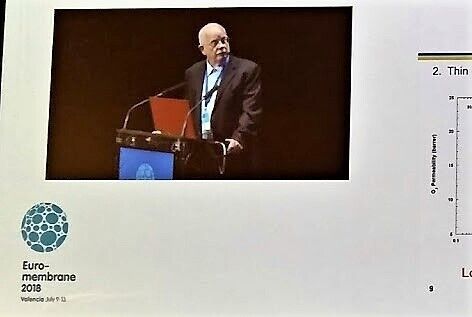
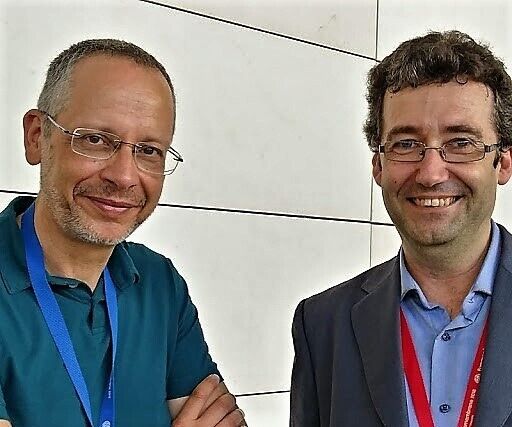
MBR parallel sessions
Highlights for those interested specifically in MBRs from the two ‘Membrane reactors and bioreactors sessions’ included the following talks:
- M.K. Jørgensen of Aalborg University, Denmark presented on the MBR−FO hybrid (‘Hybrid osmotic microfiltration bioreactor for nutrient recovery’), which relied on using seawater as the draw solution and which then demands RO for recovering the water. The process provides an intermediate stage prior to desalination for diluting the feedwater (which slightly lowers the osmotic pressure for the desalination process). Quite ingenious, provided the RO desalination plant already exists. The suggested complete process also employs an MF membrane to extract the nutrients, and phosphorus specifically. As with all such MBR processes employing dense membranes, the salinity in the bioreactor mixed liquor increases. However, the process did seem to control the P levels, which appeared to be the primary goal of the study.
- Jaime Martin-Pascual of the University of Grenada, Spain, discussed ‘Biodegredation capacity on a membrane bioreactor system of an impact of ciprofloxacin, carbamazepine and ibuprofen treating real urban wastewater’. In this presentation on micropollutants − and specifically a few of the more biorefractory pharmaceuticals − an HRT of 10h was selected, and the pilot plant was based on four ZW10 membranes. Real sewage was used, dosed with pharmaceuticals at concentrations between 0.1 and 5 mg/L. So, fairly representative of real life. As expected, the more challenging pharmaceuticals were less readily removed, though all were removed by 85% or more (which is pretty good going for something like carbamazepine).
- A.R. Alkmim of the Federal University of Minas Gerais in Brazil discussed process optimisation by multivariate statistical process control (‘Monitoring filterability decrease of membrane bioreactors using multivariate statistical techniques’). This study was based on a petroleum industry application: a small pilot plant using a single ZW10 module. Four water quality parameters and the TTF (sludge filterability) were selected for optimisation. 72 data were used for model identification, construction and validation − possibly a little scant for such purposes. The boundaries for operation (based on filterability) were identified, and the model used to quantify the impact of the individual process variables responsible for deviation from normal operation. Apparently, filterability loss was attributable primarily to oil and grease shocks: the model could therefore apparently potentially predict filterability reduction with O&G concentration − which would surely be something of some practical use.
- An insight into the performance of the ‘recycled’ ceramic MBR was presented by Elena Zuriaga−Agusti of FACSA, Spain in her presentation ‘Eco-friendly ceramic membranes for water reuse in a membrane bioreactor (MBR)’. The technology is certainly quite novel: a membrane material generated from ceramic and agricultural waste (specifically, olive stones). Its potential success must surely hinge on the extent of the reduced fabrication costs associated with this approach (estimated at being 20−30% compared with conventional ceramic membranes). There is currently a possible issue with rejection: for example, only 96% turbidity rejection was reported and quite limited E. Coli removal. However, as pointed out during the presentation, not all reuse opportunities demand substantial disinfection.
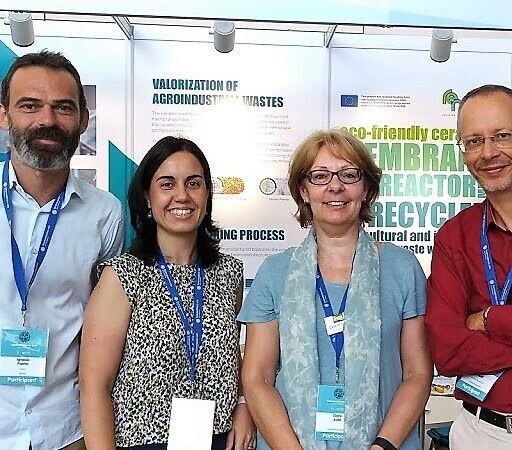
- Michigan State University’s Vlad Tarabara spoke on virus removal, a topic of keen interest to those working in municipal wastewater reuse (‘Removal of human adenovirus in MBRs: Roles of membrane pore size, fouling, pressure relaxation and membrane cleaning’.) The study included an examination of the impact of physical cleaning, and a comparison of the immersed and sidestream configuration. There was some good quantitative log removal data presented, mainly based on HF membranes, and some interesting observed impacts from adding humic acid (which increased rejection) and particles (which, somewhat strangely, decreased rejection). Less surprisingly, virus rejection was also found to be impaired by membrane cleaning. Sidestream MBRs appear to provide better virus rejection than immersed systems, presumably due to the nature of the fouling layer. An intriguing study.
- Another hybrid process, this time an immersed hollow fibre (HF) nanofiltration (NF) MBR, was discussed by M.F. Tay of Nanyang Technological University, Singapore, where there is a very challenging target of 55% water reuse set for 2060 (‘A nanofiltration membrane bioreactor (NF−MBR) + reverse osmosis (RO) process for water reuse’). The NF is substituted for the conventional UF/MF membrane primarily to reject trace organics. The fluxes obtained for this process are normally less than 1 LMH, whereas the novel bespoke HF NF used for the study could operate at 10 LMH. The group at Singapore has combined external novel HF NF filtration with an MBBR, so not really an NF MBR, and compared with a conventional HF UF MMBR. Rejection was obviously higher for the NF membrane, and the salt accumulation increased only by a factor of 2. The permeability of the NF appeared to be much lower than that of the conventional UF MBR at the flux of 10 LMH and had to be sustained by frequent cleaning. Given that the permeate still has to be treated by RO, the use of NF in the MBR seems a little unnecessary. Apparently, though, the overall water recovery achieved by the complete NF−MBR RO two-stage process is higher for the NF-based process. So, it’s the classic water-versus-energy dichotomy.
- Coagulant dosing for fouling reduction and phosphorus recovery in membrane biofilm reactors was the subject discussed by Z. Maletskyi of the Norwegian University of Life Sciences (‘Comparison of Al- and Fe-based membrane fouling reducers for biofilm membrane biorector’). These authors used an iFS ceramic MF membrane in conjunction with an MBBR, and measured a range of parameters including sludge quality such as zeta potential, particle size and CST. They concluded that floc size distribution was less important than zeta potential and CST in determining permeability.
- An extractive MBR for anaerobic hydrogen production was presented by Barbara Ernst of the Université de Strasbourg, France, in ‘Intensified hydrogen production in an in situ gas extracting membrane bioreactor with stabilized consortia’.
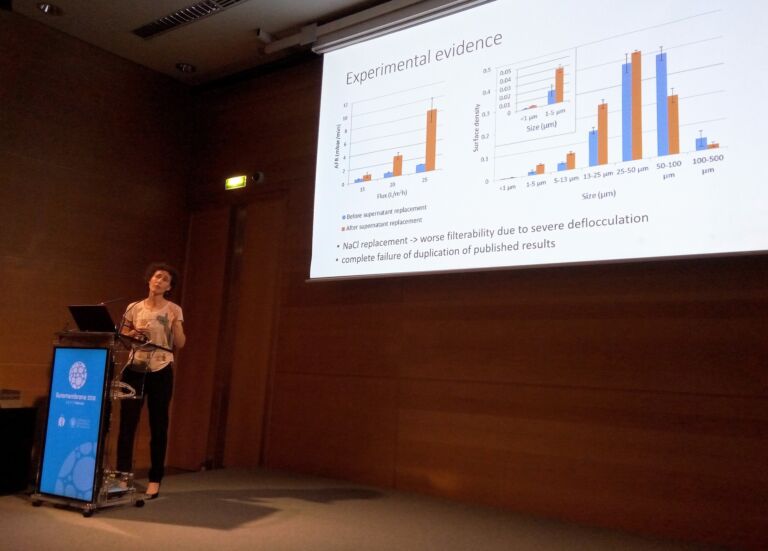
- In ‘Osmotic pressure dictates membrane fouling in MBRs: fact or fiction?’, Ilse Smets of KU Leuven, Belgium discussed the possible impact of osmotic pressure on MBRs. The idea is that the polymers dissolved in the water between floc particles in the cake layer incur a significant osmotic pressure. However, it’s not easy to study this effect practically. Changing the osmotic pressure by displacing the calcium ions with sodium ions reduces permeability through deflocculation of the flocs in the cake to produce smaller particles. High concentrations of calcium cause precipitation of fine particles which, again, reduce permeability. These effects mask that of the osmotic pressure effects, which generate a back-pressure. So, not for the first time in the history of scientific study, this group had to turn to mathematical modelling. And according to these workers, osmotic pressures as high as 0.1 bar can be calculated − similar to the hydraulic resistance of the cake.
In addition to the MBR stream
Outside of the main MBR parallel sessions, a number of other talks addressed the specific topic of MBRs, primarily focusing on fouling characterisation and/or reduction:
- Quorum quenching bacteria was discussed by O. Khelifi from the Norwegian University of Life Sciences − ‘Biofouling Control with Quorum Quenching Bacteria in Membrane Bioreactors for industrial wastewater treatment’
- an MBR−PAC study reported by N. Ran of Ben Gurion University, Israel − ‘Hybrid membrane bioreactor − powdered activated carbon (MBR−PAC) process for wastewater treatment’
- pre-ozonation of oil sands produced water prior to MBR treatment − ‘Membrane bioreactor with ozonation pretreatment: a competent candidate for recalcitrant industrial wastewater treatment’ by M. Gamal El-Din of the Department of Civil and Environmental Engineering, University of Alberta, Canada
- an anaerobic MBR study presented by Ángel Robles of the Universitat de València, Spain − ‘PDMS membranes for efficient recovery of dissolved methane from AnMBR effluents’, and
- a keynote lecture by Prof. Kimura of Hokkaido University, Japan on fouling by polysaccharides − ‘Identification of structures of polysaccharides causing membrane fouling in MBRs: a proposal for new model polysaccharides’.
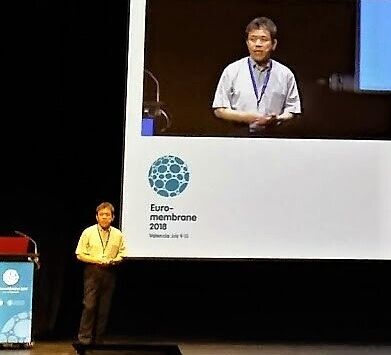
General membrane topics
- Notable among the talks on generally relevant membrane topics was that delivered by Pierre Bérubé from the University of British Columbia, Canada on membrane life (‘Seeking more realistic membrane ageing at bench scale’). While the study was based on potable water membranes, the key conclusion that performance deterioration related to the loss of the hydrophilic chemical additive to the PVDF almost certainly translates to all applications based on this material. Critically, the work was based on both controlled bench-scale tests and samples taken from full-scale operating plants, with differences in some trends between the bench-scale and full-scale data highlighted.
- The packed and highly informative programme of academic research in membranes from institutions across the world was supported by industrial presentations from Toray, Europe Membrane, Polymem and FujiFilm.
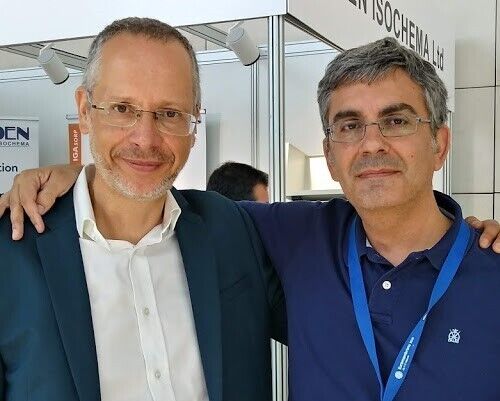
Summary
It was a privilege to attend Euromembrane 2018 and to meet and share knowledge on the subject of membranes with the 700 other attendees. A gala dinner at the magnificent old monastery La Cartuja de Ara Christi in El Puig topped off a very enjoyable week.
Euromembrane 2018 was a very diverse, well-organised and enjoyable conference set in a wonderful city – our congratulations to the organisers for a successful meeting.






